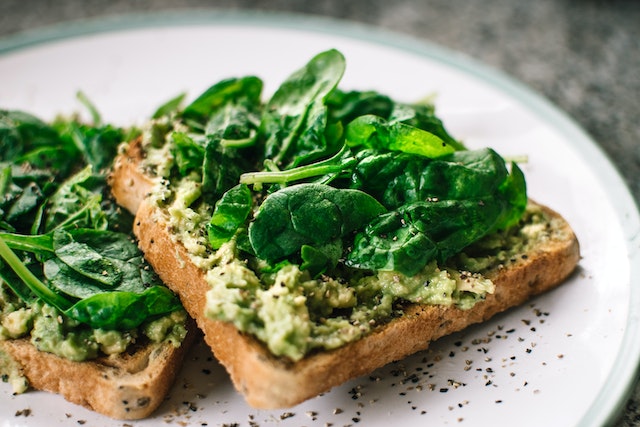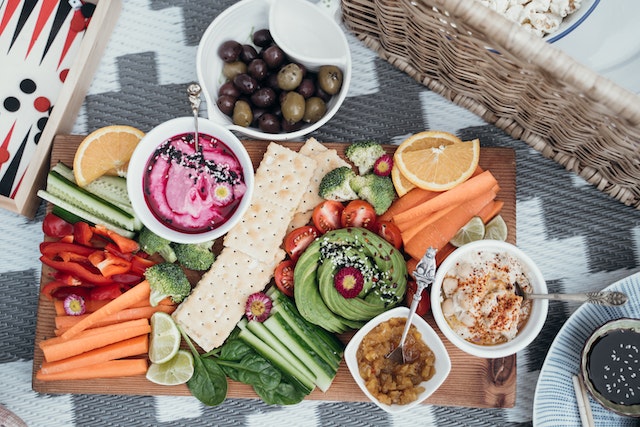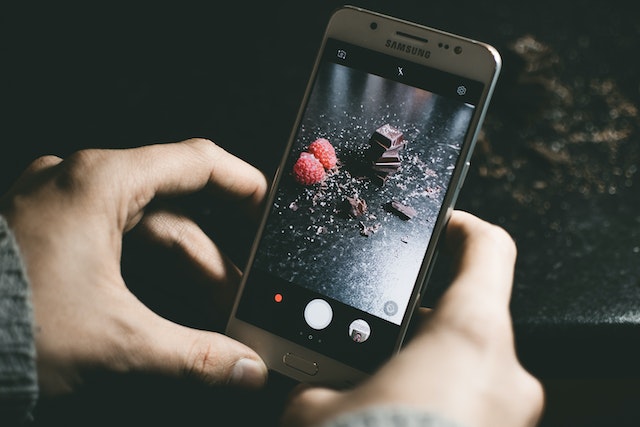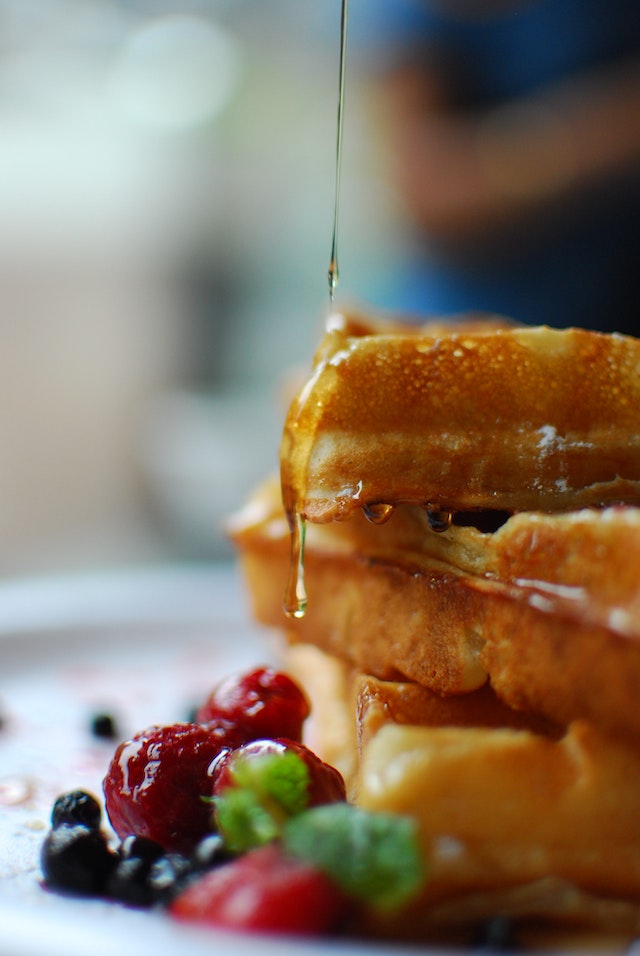
Vegan food photography is possible.
I have come to appreciate the beauty and creativity that goes into vegan food photography. With vibrant colors, diverse textures, and innovative plating techniques, vegan food can truly be a work of art.
From savory salads and hearty grain bowls to decadent desserts and creamy smoothies, vegan cuisine offers a wealth of opportunities for food photography. It’s all about playing up the natural beauty of ingredients, capturing their unique features, and highlighting their delicious flavors.
One of my favorite vegan food photographers is Angela Liddon, the creator of the popular blog and cookbook, Oh She Glows. Her photos ooze with warmth and vibrancy, making it impossible not to crave a big bowl of her creamy avocado pasta or her gooey chocolate chip cookies.
But what makes vegan food photography truly special is the philosophy behind it. Veganism embodies a deeper sense of thoughtfulness and mindfulness, and these values are reflected in the way that vegan dishes are prepared and presented. When photographing vegan food, it’s not just about making it look pretty, it’s also about conveying a message of compassion and sustainability.
So the next time you’re scrolling through Instagram or flipping through a cookbook, keep an eye out for those plant-based dishes that are capturing your attention. Chances are, you’ll be amazed by the creativity and beauty that can come from vegan food photography.
Essential Equipment for Vegan Food Photography
To excel in vegan food photography, having the right equipment can make a significant difference. From capturing the fine details of a perfectly sliced avocado to showcasing the vibrant colors of a freshly prepared salad, here are some essential tools that will elevate your vegan food photography to the next level.
Camera
Investing in a good quality camera is crucial for capturing high-resolution images. While many smartphones now offer impressive camera capabilities, a digital single-lens reflex (DSLR) camera or mirrorless camera will provide more control over settings, allowing you to achieve professional-looking shots. Look for a camera with manual mode, as this will enable you to fine-tune the exposure, focus, and depth of field.
Lens
A versatile lens is key for capturing various aspects of vegan dishes. A macro lens, with its close focusing capability, is perfect for capturing intricate details like the texture of a sprinkling of sesame seeds or the delicate frosting on a vegan cupcake. Additionally, a wide-angle lens can help capture the entirety of a beautifully arranged vegan grazing board or a picturesque outdoor vegan picnic scene.
Tripod
A steady hand is crucial for capturing sharp images, especially in low-light conditions. A tripod provides stability and minimizes camera shake, ensuring the quality of your shots.

It also allows you to experiment with different compositions and angles, without worrying about blurriness. Look for a lightweight tripod that is easy to carry and adjustable in height to accommodate different shooting scenarios.
Props and Styling Tools
Props and styling tools are essential for creating visually appealing vegan food compositions. Invest in a collection of plates, bowls, and utensils that complement the colors and themes of your dishes. Consider using textured backgrounds, such as wooden boards or patterned fabric, to add depth to your photos. Utensils like tweezers and brushes can help arrange ingredients precisely, ensuring each element is showcased to its fullest potential.
Lighting Equipment
Lighting plays a crucial role in food photography. Natural light is often considered the best option, as it beautifully illuminates the vibrant colors of vegan dishes. Position your shooting area near a bright window or consider shooting outdoors during the golden hour (the hour after sunrise or before sunset) for a soft, warm glow. However, in situations where natural light is insufficient, investing in artificial lighting equipment like ring lights or softboxes can help create a well-lit environment and avoid unwanted shadows.
Setting Up the Shot

Creating a visually enticing food photo requires careful planning and attention to detail. From choosing the right angle to arranging the props, every element plays a significant role in capturing the essence of vegan cuisine.
Here are some tips to help you set up the perfect shot for your vegan food photography.
- Choose the Right Angle: The angle at which you capture your vegan dishes can greatly impact the overall composition and storytelling of your photo. Experiment with different angles to find the one that best showcases the unique features of your dish. Consider overhead shots for beautifully arranged flat-lays or close-up shots for capturing the intricate details of a particular ingredient.
- Consider Composition: Having a strong composition is key to capturing the viewer’s attention and creating a cohesive image. Use the rule of thirds by dividing your frame into nine equal sections and placing your main subject at one of the intersecting points. This technique brings balance and visual interest to your photo. Additionally, pay attention to negative space and ensure that the composition allows the main subject to stand out.
- Play with Props and Styling: Props and styling tools can help tell a story and enhance the visual appeal of your vegan dishes. Choose props that complement the colors and themes of your food. For example, a rustic wooden cutting board can add warmth and texture to a bowl of colorful vegan roasted vegetables. Additionally, consider using garnishes or fresh herbs to add a pop of color and freshness to your composition.
- Focus on Details: Vegan cuisine often boasts a multitude of textures and vibrant colors, and capturing these details can truly elevate your food photography. Use a macro lens to capture close-up shots of different ingredients, emphasizing their uniqueness and adding depth to your photos. Focus on capturing the fine texture of a sprinkling of sea salt or the glistening surface of a drizzle of olive oil.
- Mind the Background: The background of your shot can either enhance or distract from your vegan dish. Choose backgrounds that complement and highlight the colors and textures of your food. Avoid clutter and opt for clean, simple backgrounds that allow the main subject to stand out. You can also experiment with different textures and patterns to add visual interest to your photos.
Styling Techniques for Vegan Dishes
In the world of food photography, styling plays a crucial role in creating visually appealing images that capture the essence of vegan cuisine. By thoughtfully arranging ingredients, adding pops of color, and creating a balanced composition, you can elevate your vegan food photography to the next level. Here are some styling techniques to help you showcase your vegan dishes beautifully.
Color Palette
Choose a color palette that complements the colors of your vegan dish. Consider using contrasting colors to create visual interest and make your dish stand out. Play with vibrant greens, deep purples, and bright oranges to add a pop of color to your composition. Additionally, incorporate fresh herbs, edible flowers, or colorful fruits and vegetables as garnishes to enhance the overall visual appeal.
Textures and Layers
Vegan dishes often have a variety of textures, and showcasing these textures can create visually enticing images. Layer different components of your dish to create depth and dimension. For example, stack colorful vegetables on a bed of quinoa or layer smooth avocado slices on top of crispy toast. Don’t be afraid to experiment with different textures, such as crunchy nuts, creamy sauces, or crispy breadcrumbs, to add visual interest to your composition.

Symmetry and Balance
Creating a sense of symmetry and balance in your vegan food photography can bring a pleasing aesthetic to your images. Place ingredients strategically in a symmetrical manner or use lines in the composition to guide the viewer’s eye. Incorporate symmetry by arranging items in pairs or using a central point of focus. Ensure that the visual weight of your dish is evenly distributed throughout the frame to maintain balance.
Negative Space
Leaving some empty space, known as negative space, in your composition can create a sense of simplicity and elegance. Negative space allows the main subject to stand out and draws attention to the focal point of your dish. Consider using minimalistic backgrounds or placing your dish off-center to incorporate negative space effectively.
Storytelling
Food photography is not just about capturing a beautiful image; it’s about telling a story and evoking emotions. Think about the narrative behind your vegan dish and how you can convey it through styling. For example, if you’re photographing a cozy vegan soup, include props like a rustic spoon or a cozy blanket to evoke a sense of comfort. Incorporate elements that enhance the narrative and create a connection between the viewer and the food.
Styling techniques play a significant role in creating visually enticing vegan food photography. By considering color palettes, textures, symmetry, negative space, and storytelling elements, you can transform your images into works of art that captivate and inspire. Remember to experiment, have fun, and let your creative vision shine through as you showcase the vibrant and delicious world of vegan cuisine.